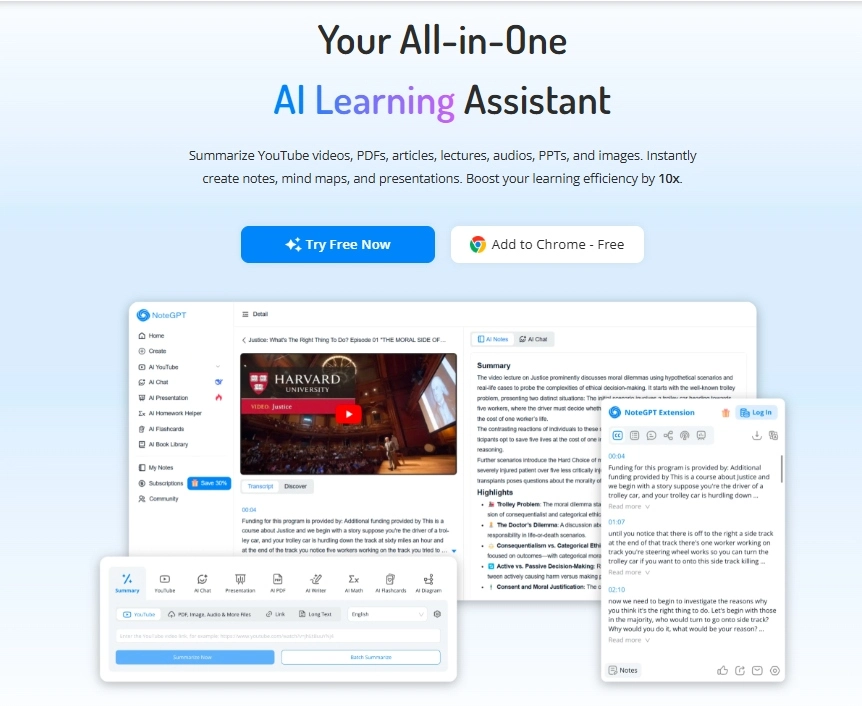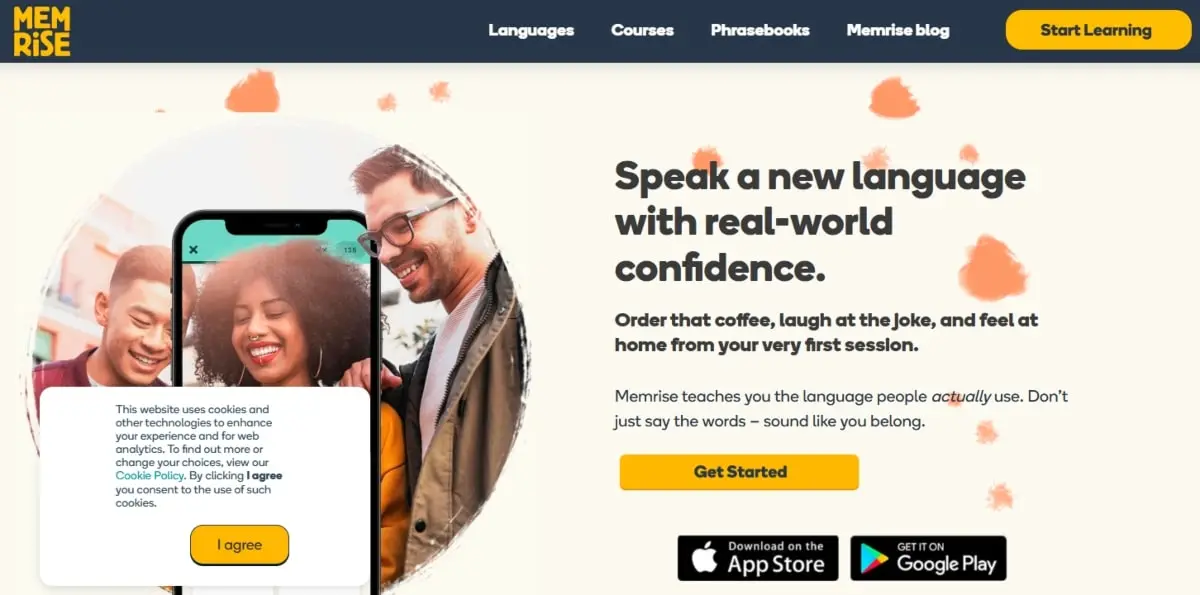If your study notes feel like a chaotic dump of slides, PDFs, and screenshots, an AI study guide maker can turn that pile into a clear, actionable plan—complete with summaries, flashcards, quizzes, and a realistic schedule. In this guide, you’ll learn how these tools work, when to use free vs paid versions, and a simple workflow to go from raw notes to exam-ready.
What Is an AI Study Guide Maker?
An AI study guide maker is a tool that ingests your learning materials—lecture slides, textbook chapters, class notes, and recorded transcripts—and automatically produces an organized study resource. Think of it as a digital tutor that compiles a syllabus-specific cheat sheet, generates practice questions, and recommends a reading plan based on your timeline.
Key benefits why students love it:
- Speed: Build a structured guide in minutes, not hours.
- Clarity: Distills complex chapters into digestible sections with headings and summaries.
- Active recall: Many tools auto-generate flashcards and quizzes to strengthen memory.
- Adaptability: Update your guide as you add new notes or shift deadlines.
- Accessibility: Useful for neurodiverse learners who benefit from structure and chunking.
When people ask for the best AI study guide maker, they’re usually looking for something that strikes a balance between accuracy, flexible inputs, export options, and a gentle learning curve.
How AI Study Guide Makers Work
Under the hood, these tools use large language models (LLMs) to read and restructure your content. They identify concepts, definitions, relationships, formulas, and common question types. Then they format everything into study-friendly outputs.
Typical inputs they accept:
- Documents: PDFs, Word files, Google Docs
- Slides: PowerPoint or PDF slide decks
- Notes: Text, markdown, Notion pages
- Links: Public webpages or articles
- Transcripts: Audio/video captions for lectures
Step-by-Step: Create a High-Quality AI Study Guide
1) Prep your materials
Gather all sources
Pull your syllabus, lecture slides, textbook chapters, labs, and past quizzes into a single folder. Keeping everything in one place helps the AI see the full context and reduces gaps in your guide.
Clean the noise
Remove duplicates, irrelevant PDFs, and low-quality scans. If you used OCR, fix obvious typos—clean text dramatically improves summary accuracy and flashcard quality.
Name files clearly
Use a consistent pattern like Course-Unit-Topic-Week.pdf. Clear naming helps both you and the AI cluster to trace topics and facts back to the source.
2) Feed the AI with context
Add course specifics
Upload your materials and include the course name, exam date, and focus areas (e.g., “Units 3–6, emphasis on thermodynamics problems”). The more context you provide, the more targeted and exam-ready your study guide becomes.
3) Use prompt templates that work
Structured Outline
Act as a course tutor. From these materials, produce a study guide with: (a) a hierarchical outline (H2/H3), (b) bullet key points per section, (c) formulas with units, (d) a 2-line TL;DR after each section. Focus on [topics].Use this to get a clean backbone you can skim and expand as needed.
Flashcards
Generate 50 concise flashcards in CSV format with columns: Term, Definition, Example. Avoid duplicate concepts. Keep each definition < 25 words. This yields portable cards you can import into Anki or Quizlet for spaced repetition.
Practice Questions
Create 20 exam-style questions (mix MCQ and short answer). After listing questions, provide a separate answer key. Emphasize [problem types]. You’ll get varied question types plus an answer key for active recall and self-grading.
Schedule
I have [X] days until the exam. Create a day-by-day plan with 60–90 minute blocks, including spaced review of weak areas and 2 full practice sessions. This turns your timeline into manageable sessions with built-in review cycles.
4) Review and refine
Skim for hallucinations
Cross-check definitions, formulas, and citations against your textbook or slides. A quick validation pass catches small errors before they snowball.
Add human notes
Insert instructor hints, “likely exam topics,” and class-specific examples. Your personal annotations make the guide uniquely aligned to your course.
Iterate deliberately
Regenerate flashcards for weak areas and add “why this is wrong” explanations to tricky MCQs. Iteration converts passive reading into high-yield learning.
5) Export and practice
Export to your system
Send the final guide to Anki, Notion, or Google Docs so it fits your daily workflow. Easy access increases the odds you’ll actually use it.
Use active recall
Test yourself before re-reading—quizzes first, review second. This strengthens memory pathways far better than passively scanning notes.
Layer spaced repetition
Revisit material at 24h, 72h, 7 days, then weekly until the exam. Scheduled refreshers prevent decay and keep concepts exam-ready.
Top 5 AI Study Guide Makers: Complete Comparison
1) Quizlet
Why choose it: unmatched flashcard ecosystem, strong study modes, and expanding AI features. Magic Notes turns your pasted notes into guides and flashcards; Q-Chat adds a conversational tutor layer. Study modes like Learn personalize sequencing and difficulty.

Standout features
- Magic Notes → flashcards, practice tests, outlines from your materials.
- Q-Chat AI tutor for conversational practice (availability may be limited by region/age).
- Huge public library + classroom games (Categories, etc.).
Good fit for: general studies, vocab, test prep, teachers managing class games/assignments.
Watch-outs: richer features sit behind Plus; some modes are limited on free.
2) NoteGPT
Why choose it: you drop YouTube/PDFs/PPTs/articles/audio and get summaries, mind maps, flashcards, quizzes, even slide outlines—great for consolidating messy sources.

Standout features
- All-in-one summarizer → notes, mind maps, presentations.
- Chrome extension + quick video transcript capture; flashcard integration paths.
- Clear pricing tiers on site.
Good fit for: lecture-heavy courses, flipped classrooms, researchers compiling from multiple media.
Watch-outs: always spot-check summaries for nuance/math; confirm export limits per tier.
3) Memrise
Why choose it: authentic short native-speaker videos plus AI conversation practice (MemBot) for safe, unlimited speaking reps; excellent for spaced repetition and confidence.

Standout features
- Interest-based video feeds + targeted vocab.
- MemBot AI tutor for 24/7 conversational drills with hints and feedback.
- Free vs Pro options on the official plan page.
Good fit for: beginners to intermediate language learners aiming for real-world speaking.
Watch-outs: not a general “ingest your PDF” study guide maker; it’s a language platform first.
4) Flint
Why choose it: AI tutor that can walk through solutions, review uploaded tests, and generate extra practice; plus teacher integrations (Canvas, Google Classroom, etc.)—strong K-12 positioning.

Standout features
- Upload a graded test → get guided corrections + new practice sets.
- Broad teacher toolbox (quizzes, study guides, rubrics, reading-leveling) and LMS ties.
Good fit for: schools, teachers, and parents seeking structured remediation and practice.
Watch-outs: some features target educators/licensing; individual pricing may vary—confirm on site.
5) Penseum
Why choose it: markets itself as a free AI study guide maker that turns materials into notes, flashcards, and quizzes, with a 24/7 tutor vibe and step-by-step solutions. Android app available.

Standout features
- One-click study guide, flashcards, quizzes from uploads/links.
- App listing highlights personalized study aids and guides.
Good fit for: students who want a free on-ramp to AI study help.
Watch-outs: smaller ecosystem vs. incumbents; verify privacy & export options that matter to you.
| Tool | What it’s best at | Inputs it handles | Typical outputs | AI tutor? | Exports/ecosystem | Pricing notes* |
|---|---|---|---|---|---|---|
| Quizlet | Flashcards, tests, huge community sets | Text/notes; uploads for Study Guides | Flashcards, Learn, Test, Study Guides | Q-Chat beta/regions vary | Massive library, games, classroom modes | Freemium; Plus/teacher tiers; annual or monthly plans. |
| NoteGPT | Turning videos/PDFs/slides into study packs fast | YouTube, PDFs, PPTs, articles, audio, images | Summaries, notes, mind maps, flashcards, quizzes | Chat/explain features | Chrome ext.; Quizlet flashcard export | Free & paid tiers; see pricing page. |
| Memrise | Language learning & long-term retention | App lessons + your practice | Courses, spaced review, AI conversation (MemBot) | MemBot (speaking practice) | Mobile & web; large language catalog | Free & Pro plans. |
| Flint | Step-by-step help, teacher workflows (K-12) | Notes, assignments, tests | Worked solutions, practice problems, feedback | Full tutor mode | LMS integrations (Canvas, Google Classroom, etc.) | School/teacher-oriented; contact sales/site. |
| Penseum | Free AI tutor vibe + quick study kits | Notes, PDFs, videos, PPTs | Study guides, flashcards, quizzes, step-by-step solutions | Yes (24/7 style) | Web + Android | Free core tool (site/app listing). |
Which one should you choose?
Use this fast chooser:
- Need the biggest flashcard library + reliable study modes?
- Have tons of lectures/videos/PDFs to distill into guides, mind maps, and quizzes?
- Learning a language and want endless safe speaking practice with AI? .
- You’re a teacher/parent or K-12 student needing step-by-step feedback & integrations?
- Want a free AI tutor to spin up guides, flashcards, and quizzes? → Penseum.
Tips, Pitfalls, and Ethical Use
Don’t Outsource Thinking
AI tools can speed up your study process, but they should never replace your understanding. Let the AI generate summaries or outlines, then take time to refine and rewrite them in your own words. True learning happens when you process and reorganize the information yourself.
Avoid Over-Summarization
It’s easy to let AI condense everything into a few lines, but that can remove the depth needed for comprehension. Always preserve the why and how behind key ideas, especially in subjects that rely on reasoning, formulas, or critical analysis.
Spot-Check Math and Data
When dealing with equations, units, or data-driven concepts, review every step. Even the best AI can occasionally misplace constants or mix up units. Verifying accuracy builds confidence and prevents learning errors from compounding later.
Respect Copyright and Data Privacy
Only use your own study materials or sources that you have permission to share. Avoid uploading copyrighted textbooks or proprietary slides to online AI tools. Protecting intellectual property and your own data keeps your academic integrity intact.
Maintain Academic Integrity
Use AI as an assistant, not a shortcut. Generating a study guide is fine; submitting AI-written assignments or exam answers isn’t. Most schools and universities have strict guidelines, so make sure your use of AI follows them.
Prioritize Accessibility
A great study guide should be easy to read and inclusive. Increase font sizes for comfort, use readable color contrasts, and add alt text for visuals. If you export materials, pick formats that support screen readers or dyslexia-friendly layouts.
Conclusion
An AI study guide maker is like a turbo-organizer for your brain: it structures your materials, suggests what to practice first, and gives you the tools—summaries, flashcards, quizzes—to learn faster and remember longer. Start with a free option, validate the outputs, and upgrade only if you need larger limits, exports, or analytics. The best tool is the one you’ll use consistently.
Frequently Asked Questions (FAQ’s)
What is the difference between an AI study guide maker and a note summarizer?
Summarizers condense text; a study guide maker structures an entire learning plan with outlines, quizzes, flashcards, and schedules.
Are free AI study guide makers enough for tough courses?
Often for shorter topics, yes. For heavy loads (STEM with equations, multi-week finals), paid tiers help with larger files, better exports, and analytics.
How do I stop AI from making mistakes?
Feed clean inputs, add course context, and verify outputs. Use citations/backlinks and cross-check formulas and definitions.
Can I import flashcards into Anki?
Yes—export CSV with fields like Term, Definition, Example. Keep definitions concise and avoid commas inside fields or wrap them in quotes.
What’s the ideal study schedule before an exam?
Start with a broad pass, then active recall, spaced repetition. Aim for 60–90 minute sessions, short breaks, and two full practice runs.














